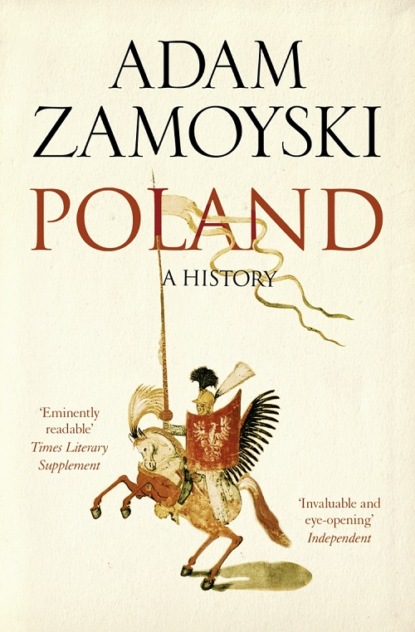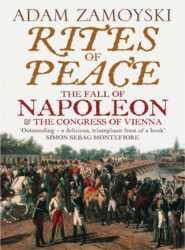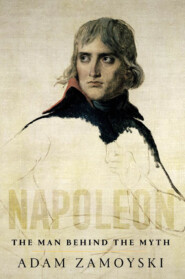По всем вопросам обращайтесь на: info@litportal.ru
(©) 2003-2024.
✖
Poland: A history
Настройки чтения
Размер шрифта
Высота строк
Поля
TWENTY-FOUR: The Third Republic (#litres_trial_promo)
Keep Reading (#litres_trial_promo)
Index (#litres_trial_promo)
By The Same Author (#litres_trial_promo)
About the Publisher (#litres_trial_promo)
MAPS (#ulink_873c54d4-9bb5-5639-ab7b-95d9d0784723)
TABLES (#ulink_4845e2f6-193f-5dc8-8929-0ccb0dd45c14)
NOTE ON POLISH PRONUNCIATION (#ulink_1420ad50-193a-524b-8c30-2105238fa297)
Polish words may look complicated, but pronunciation is at least consistent. All vowels are simple and of even length, as in Italian, and their sound is best rendered by the English words ‘sum’ (a), ‘ten’ (e), ‘ease’ (i), ‘lot’ (o), ‘book’ (u), ‘sit’ (y).
Most of the consonants behave in the same way as in English, except for c, which is pronounced ‘ts’; j, which is soft, as in ‘yes’; and w, which is equivalent to English v. As in German, some con—sonants are softened when they fall at the end of a word, and b, d, g, w, z become p, t, k, f, s, respectively.
There are also a number of accented letters and combinations peculiar to Polish, of which the following is a rough list:
ó = u, hence Kraków is pronounced ‘krakooff ‘.
ą = nasal a, hence sąd is pronounced ‘sont’.
ę = nasal e, hence Łęczyca is pronounced ‘wenchytsa’.
ć = ch as in ‘cheese’.
cz = ch as in ‘catch’.
ch = guttural h as in ‘loch’.
ł = English w, hence Bolesław becomes ‘Boleswaf, Łódz ‘Wootj’.
ń = soft n as in Spanish ‘mañana’.
rz = French j as in ‘je’.
ś = sh as in ‘sheer’.
sz = sh as in ‘bush’.
?? = as rz (—?? is the accented capital).
ź = A similar sound, but sharper as in French ‘gigot’.
The stress in Polish is consistent, and always falls on the pen—ultimate syllable.
PREFACE (#ulink_0c458734-2087-5736-b389-d62c24e633dc)
The idea that a historian should radically alter his view of the past over the space of a couple of decades is, on the face of it, preposterous. But when I reread my history of Poland, The Polish Way, first published in 1987, which I meant to revise and update for a new edition, I became convinced of the contrary. History did not, as some have argued, come to an end in the intervening two decades, but they have completely changed the perspective.
When I sat down to write that book, few people in western Europe, let alone further afield, had any idea of where Poland lay, and fewer still had any sense of its having a past worth dwelling on. Given that history is made up of an intricate interaction of land, people and culture, Poland presented unique problems. How was the historian to approach a country whose territory had expanded and contracted, shifted and vanished so dramatically, which currently existed as an almost random compromise resulting from the Second World War, and which lay within the imperial frontiers of another power? How was he to treat a people which, from ethnic, cultural and religious diversity had been purged by genocide and ethnic cleansing into a homogeneous society? How to represent a culture which had been largely obliterated, whose remains survived only underground or in exile?
Matters were made no easier by the fact that the entire geo—political space in which Poland existed was also in an unnatural state of suspension, with Germany divided, Russia a bureaucratic totalitarian monstrosity, and the areas inhabited by the Lithuanians, Belorussians and Ukrainians a kind of limbo.
Although the election of a Pole, Karol Wojtyła, to the Holy See as Pope John Paul II, the dramatic rise of Solidarność and a number of books and articles published in the West, along with increased travel, had recently brought Poland into the consciousness of greater numbers of people, it was not until the collapse of the Soviet project in 1989 that the situation began to alter significantly. It was only then that Poland and the other countries of the region came back to life as political entities. And that fundamentally altered the way in which they are perceived.
The concurrent process of globalisation and the huge shifts in economic and military power taking place around the world have also made it easier for the historian to represent a foreign country to his readers. The fact that what were then viewed as ‘developing countries’ (with all the condescension that term implied) are now emerging as the major players of the future has radically altered attitudes in the hitherto dominant nations of the West. Put simply, the historian has less to explain and fewer prejudices to break down. But the real significance of the events of 1989 only began to make itself felt later.
When I was writing my book, Europe was divided by the Iron Curtain. Crossing it was an awesome and bizarre experience for anyone brought up in the West—the coils of barbed wire, the watchtowers, the machine guns aimed at the traveller and the ubiquitous guards with their Alsatian dogs were richly redolent of Nazi concentration camp and Soviet gulag. Not surprisingly, since this absurd barrier was one of the last surviving vestiges of a long historical process that had reached its apogee in the twin abominations of Soviet communism and German fascism.
Only two hundred years before, the whole area between the Rhine and the Dnieper had been inhabited by a variety of peoples with wildly differing cultural, religious and political affiliations, organised into an equally variegated miscellany of empires, commonwealths, kingdoms, duchies, principalities, republics, bishoprics, city states, baronies and lesser sovereignties. In a process that began with the eighteenth-century partitions of Poland, these polities had been subjugated and then reorganised into a small number of highly competitive states and the peoples inhabiting them into largely fictitious nations which saw their survival in Darwinian terms. This initiated a struggle that culminated in the two world wars and the Cold War.
If the Iron Curtain disfigured Europe physically, the process which had led up to it had distorted history even more fundamentally. No history more so than that of Poland, which was the first and greatest casualty of the process. Two years after Russia, Prussia and Austria had divided the country up among themselves, on 26 January 1797 they signed a convention containing a secret article which stressed the absolute ‘necessity of abolishing everything which might recall the existence of a Polish kingdom in face of the performed annihilation of this political body’. In this spirit, the Prussians melted down the Polish crown jewels, the Austrians turned royal palaces into barracks, and the Russians grabbed everything they could lay their hands on and shipped it out, particularly documents. All three rewrote history to give the impression that Poland had never been a fully sovereign state, only a backwater which needed civilising.
Throughout the nineteenth century the Poles who struggled to reverse this process and recover their independence were generally viewed in the West as troublemakers impeding the orderly march of progress. In the twentieth century, by contrast, when they once again fell victim, to the Soviet Union, they came to be seen as reactionary and backward because of their resilience to supposedly progressive doctrines such as communism.
Looking back on the way history was written in the twentieth century, particularly in its middle decades, one cannot avoid being struck by how deeply politicised it was. Not only did nationalism or dominant state orthodoxy select and distort facts; various interpretations of Marxist theory reinvented them to suit visions of the future.
Not surprisingly, considering the country’s position at the geographical and ideological interface of such disputes, Poland’s past received the full treatment. And given that it was a battleground for political and nationalist passions of great intensity, it was impossible, even for supposedly uncommitted historians in faraway universities, to write about it entirely dispassionately. That did not change until the disintegration of the Soviet experiment robbed the most vociferous combatants of their arguments.
What was not immediately apparent even at that point was that the disintegration of the Soviet Union held a deeper significance: it marked the end of the era of state-based Darwinism that had begun with the rise of Prussia in the early eighteenth century (arguably even earlier). This model had been discredited by the Great War and was abandoned by most of Europe after 1945, as one country after another divested itself of its national pretensions and imperial attributes to pool its sovereignty in the interests of a united Europe. But the Soviet Union remained wedded to the old mindset of paranoid nationalist/ideological struggle for dominance. Its implosion released the nations of East Central Europe from this, and although large sections of society within those nations, particularly in the Balkans, are still affected by it (for understandable historical reasons), most of the inhabitants of the area have been able to, or even been obliged to, take an entirely fresh view of the past.
This mirrors an analogous process that has been taking place in Western societies. While most young Britons would probably still enjoy watching a 1940s war film glorifying British pluck and derring-do, the overwhelming majority might as well, for all their empathy, be watching an Arthurian romance or a piece of science fiction, and the concept of laying down their lives for their country is largely alien to them. The same is even more true of the French and Germans, while to young Italians the very myths of the Risorgimento, the founding faith of their country, now appear laughable. The majority of the population of the European Union now thinks in terms of societies rather than nations.
Histories written a few decades ago now appear strangely obsessed with political achievements, dominions established, battles won—in essence, with national success. They can seem embarrassingly patronising on the subject of all those who did not win out according to the rules of the day. Those rules have changed, and this is particularly welcome to the historian of Poland.
In the early modern period, the Poles failed spectacularly to build an efficient centralised state structure and they paid the price, being swallowed up by their more successful neighbours. The history of Poland has therefore, up until now, been written as that of a failed state. Like some distorting lens or filter, that failure coloured and deformed the historian’s view of the whole of Polish history.
He is now no longer, as he was only a couple of decades ago, writing the history of an enslaved and to all intents and purposes non-existent country. There is a great difference between writing up a bankrupt business and writing up one that has been through hard times and turned the corner. He is no longer writing the history of a state that failed, but of a society that created a social and political civilisation of its own, one which was occluded by the success of a rival model (now utterly discredited) but whose ideals are close to those the world values today.
All this convinced me that I could not just brush up and update The Polish Way. But since I still stand by that book, as far as it goes, and indeed its basic structure, I did not see any point in beginning a new history of Poland from scratch, and used that earlier book as the basis for this one. At the same time, I have so thoroughly reworked the text, removed so much of the old and added so much that is new, that I had no qualms about submitting it under a new title.
Some readers may be surprised to find no references to sources in the text. This is an essay rather than a textbook. It is based on wellknown and undisputed facts, and is not in any sense meant to break new ground. I therefore saw no reason to clutter the text with numbers, which many readers find off-putting.
I owe a debt to Miłosz Zieliński, who helped me research the recent past, and to Jakub Borawski, who helped me place it in perspective. I should like to thank my editors Richard Johnson, who gave me invaluable support when I began to entertain doubts about the venture, Arabella Pike, who took the project over with enthusiasm, and Robert Lacey, whose editorial skills are nonpareil. I must also thank Shervie Price for reading the text and making useful suggestions, and my wife Emma for her sensible comments and her love.
Adam ZamoyskiLondon, 2009
ONE People, Land and Crown (#ulink_20cc64dd-1db7-5df7-9779-4504004ba1a3)
In the Middle Ages, when people favoured simple explanations, Polish folklore had it that the German nation had been deposited on this earth through the rectum of Pontius Pilate. Sadly, the Polish nation boasts no such convenient and satisfying founding myth, and its origins were something of a mystery even to its neighbours.
While most of Europe evolved from the Dark Ages in mutual interaction, with Celtic monks from Ireland carrying the religion of Rome to Germany, and Vikings from Scandinavia linking England and France with Sicily and the Arab world or sailing down the rivers of Russia to Kiev and Constantinople, the area that is now Poland existed in a vacuum.
Along with eastern Germany, Bohemia and Slovakia, it had been settled by a number of Slav peoples. Roman merchants who had come from the south in the first century in search of amber, the ‘gold of the north’, had recorded that they were unwarlike and agricultural, living in a state of ‘rural democracy’. The most numerous of these peoples even took their name from their trade, being known as ‘the people of the fields’, Polanie in their language. There is some evidence that in the sixth century the area was overrun or partially settled by Sarmatians, a warrior people from the Black Sea Steppe, who may have provided a new ruling class, or perhaps only a military caste for the Polanie.











